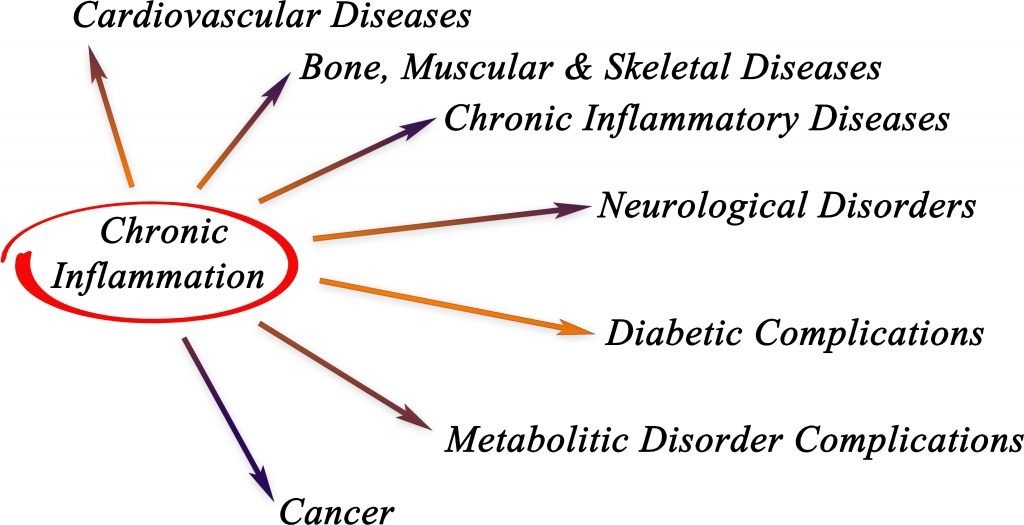November is National Diabetes Month and we are joining the cause to bring attention to diabetes and its impact on millions of Americans. In 2015, 30.3 million people in the US had diabetes and of those, only 23.1 million were diagnosed. The problem continues every year with about 1.5 million more Americans being diagnosed. This year, diabetes remains the 7th leading ca use of death among Americans.
use of death among Americans.
There are two types of diabetes, Type 1 and Type 2. Type 1 diabetes is when the body does not produce insulin and it is usually diagnosed earlier in life. Type 2 is when your body does not use insulin properly and it’s the more common form of diabetes.
Type 2 diabetes is one of the most common inflammation related chronic conditions. Chronic inflammation is long term inflammation that occurs when there is a continuous stimulus that causes too many immune cells to be sent, leading to too much inflammation, and damaging healthy cells. It is a common cause for many chronic illnesses and can lead to diabetes due to its effects on insulin resistance.
The best way to reduce inflammation is through an improved lifestyle. This includes improving your diet, increasing physical activity and practicing stress management. Check out the tips below to help you live a lifestyle that protects you from diabetes.
- Add herbs, spices and aromatics to your diet. For each meal include one to two of these to not only increase flavor, but to increase the anti-inflammatory power of your foods.
- Eat lots of vegetables. Make sure to include vegetables in every meal and snack. Choose a variety of types and colors to get the most benefit.
- Park further away. When looking for a parking spot look for a spot that is far away from the entrance. This will make you walk more, which will increase your physical activity in the long run.
- Take physical activity breaks. If you sit for a long period of time, make sure to take a break every 30 minutes to stretch or do another form of physical activity.
- Make time for yourself. Schedule time for yourself to do something that relaxes you. It doesn’t have to be a long period of time, just 15-20 minutes.
- Know your stress triggers. Figure out what stresses you the most and learn how to address this stress.

